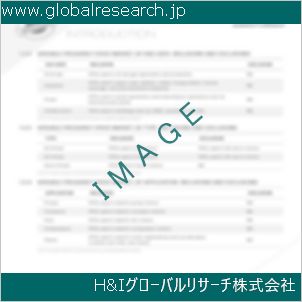Table of Contents
1 Industry Overview of Di-P-Tolylamine
1.1 Definition and Specifications of Di-P-Tolylamine
1.1.1 Definition of Di-P-Tolylamine
1.1.2 Specifications of Di-P-Tolylamine
1.2 Classification of Di-P-Tolylamine
1.3 Applications of Di-P-Tolylamine
1.3.1 Nuclear Application
1.3.2 Non-Nuclear Application
1.4 Industry Chain Structure of Di-P-Tolylamine
1.5 Industry Overview and Major Regions Status of Di-P-Tolylamine
1.5.1 Industry Overview of Di-P-Tolylamine
1.5.2 Global Major Regions Status of Di-P-Tolylamine
1.6 Industry Policy Analysis of Di-P-Tolylamine
1.7 Industry News Analysis of Di-P-Tolylamine
2 Manufacturing Cost Structure Analysis of Di-P-Tolylamine
2.1 Raw Material Suppliers and Price Analysis of Di-P-Tolylamine
2.2 Equipment Suppliers and Price Analysis of Di-P-Tolylamine
2.3 Labor Cost Analysis of Di-P-Tolylamine
2.4 Other Costs Analysis of Di-P-Tolylamine
2.5 Manufacturing Cost Structure Analysis of Di-P-Tolylamine
2.6 Manufacturing Process Analysis of Di-P-Tolylamine
3 Technical Data and Manufacturing Plants Analysis of Di-P-Tolylamine
3.1 Capacity and Commercial Production Date of Global Di-P-Tolylamine Major Manufacturers in 2023
3.2 Manufacturing Plants Distribution of Global Di-P-Tolylamine Major Manufacturers in 2023
3.3 R&D Status and Technology Source of Global Di-P-Tolylamine Major Manufacturers in 2023
3.4 Raw Materials Sources Analysis of Global Di-P-Tolylamine Major Manufacturers in 2023
4 Capacity, Production and Revenue Analysis of Di-P-Tolylamine by Regions, Types and Manufacturers
4.1 Global Capacity, Production and Revenue of Di-P-Tolylamine by Regions 2019-2024
4.2 Global and Major Regions Capacity, Production, Revenue and Growth Rate of Di-P-Tolylamine 2019-2024
4.3 Global Capacity, Production and Revenue of Di-P-Tolylamine by Types 2019-2024
4.4 Global Capacity, Production and Revenue of Di-P-Tolylamine by Manufacturers 2019-2024
5 Price, Cost, Gross and Gross Margin Analysis of Di-P-Tolylamine by Regions, Types and Manufacturers
5.1 Price, Cost, Gross and Gross Margin Analysis of Di-P-Tolylamine by Regions 2019-2024
5.2 Price, Cost, Gross and Gross Margin Analysis of Di-P-Tolylamine by Types 2019-2024
5.3 Price, Cost, Gross and Gross Margin Analysis of Di-P-Tolylamine by Manufacturers 2019-2024
6 Consumption Volume, Consumption Value and Sale Price Analysis of Di-P-Tolylamine by Regions, Types and Applications
6.1 Global Consumption Volume and Consumption Value of Di-P-Tolylamine by Regions 2019-2024
6.2 Global and Major Regions Consumption Volume, Consumption Value and Growth Rate of Di-P-Tolylamine 2019-2024
6.3 Global Consumption Volume and Consumption Value of Di-P-Tolylamine by Types 2019-2024
6.4 Global Consumption Volume and Consumption Value of Di-P-Tolylamine by Applications 2019-2024
6.5 Sale Price of Di-P-Tolylamine by Regions 2019-2024
6.6 Sale Price of Di-P-Tolylamine by Types 2019-2024
6.7 Sale Price of Di-P-Tolylamine by Applications 2019-2024
6.8 Market Share Analysis of Di-P-Tolylamine by Different Sale Price Levels
7 Supply, Import, Export and Consumption Analysis of Di-P-Tolylamine
7.1 Supply, Consumption and Gap of Di-P-Tolylamine 2019-2024
7.2 Global Capacity, Production, Price, Cost, Revenue, Supply, Import, Export and Consumption of Di-P-Tolylamine 2019-2024
7.3 USA Capacity, Production, Price, Cost, Revenue, Supply, Import, Export and Consumption of Di-P-Tolylamine 2019-2024
7.4 EU Capacity, Production, Price, Cost, Revenue, Supply, Import, Export and Consumption of Di-P-Tolylamine 2019-2024
7.5 China Capacity, Production, Price, Cost, Revenue, Supply, Import, Export and Consumption of Di-P-Tolylamine 2019-2024
7.6 Japan Capacity, Production, Price, Cost, Revenue, Supply, Import, Export and Consumption of Di-P-Tolylamine 2019-2024
8 Major Manufacturers Analysis of Di-P-Tolylamine
8.1 Manufacturer One
8.1.1 Company Profile
8.1.2 Product Picture and Specifications
8.1.2.1 Type I
8.1.2.2 Type II
8.1.2.3 Type III
8.1.3 Capacity, Production, Price, Cost, Gross and Revenue
8.1.4 Contact Information
8.2 Manufacturer Two
8.2.1 Company Profile
8.2.2 Product Picture and Specifications
8.2.2.1 Type I
8.2.2.2 Type II
8.2.2.3 Type III
8.2.3 Capacity, Production, Price, Cost, Gross and Revenue
8.2.4 Contact Information
8.3 Manufacturer Three
8.3.1 Company Profile
8.3.2 Product Picture and Specifications
8.3.2.1 Type I
8.3.2.2 Type II
8.3.2.3 Type III
8.3.3 Capacity, Production, Price, Cost, Gross and Revenue
8.3.4 Contact Information
8.4 Manufacturer Four
8.4.1 Company Profile
8.4.2 Product Picture and Specifications
8.4.2.1 Type I
8.4.2.2 Type II
8.4.2.3 Type III
8.4.3 Capacity, Production, Price, Cost, Gross and Revenue
8.4.4 Contact Information
8.5 Manufacturer Five
8.5.1 Company Profile
8.5.2 Product Picture and Specifications
8.5.2.1 Type I
8.5.2.2 Type II
8.5.2.3 Type III
8.5.3 Capacity, Production, Price, Cost, Gross and Revenue
8.5.4 Contact Information
…
9 Marketing Trader or Distributor Analysis of Di-P-Tolylamine
9.1 Marketing Channels Status of Di-P-Tolylamine
9.2 Traders or Distributors with Contact Information of Di-P-Tolylamine by Regions
9.3 Ex-work Price, Channel Price and End Buyer Price Analysis of Di-P-Tolylamine
9.4 Regional Import, Export and Trade Analysis of Di-P-Tolylamine
10 Industry Chain Analysis of Di-P-Tolylamine
10.1 Upstream Major Raw Materials Suppliers Analysis of Di-P-Tolylamine
10.1.1 Major Raw Materials Suppliers with Contact Information Analysis of Di-P-Tolylamine
10.1.2 Major Raw Materials Suppliers with Supply Volume Analysis of Di-P-Tolylamine by Regions
10.2 Upstream Major Equipment Suppliers Analysis of Di-P-Tolylamine
10.2.1 Major Equipment Suppliers with Contact Information Analysis of Di-P-Tolylamine
10.2.2 Major Equipment Suppliers with Product Pictures Analysis of Di-P-Tolylamine by Regions
10.3 Downstream Major Consumers Analysis of Di-P-Tolylamine
10.3.1 Major Consumers with Contact Information Analysis of Di-P-Tolylamine
10.3.2 Major Consumers with Consumption Volume Analysis of Di-P-Tolylamine by Regions
10.4 Supply Chain Relationship Analysis of Di-P-Tolylamine
11 Development Trend of Analysis of Di-P-Tolylamine
11.1 Capacity, Production and Revenue Forecast of Di-P-Tolylamine by Regions and Types
11.1.1 Global Capacity, Production and Revenue of Di-P-Tolylamine by Regions 2024-2029
11.1.2 Global and Major Regions Capacity, Production, Revenue and Growth Rate of Di-P-Tolylamine 2024-2029
11.1.3 Global Capacity, Production and Revenue of Di-P-Tolylamine by Types 2024-2029
11.2 Consumption Volume and Consumption Value Forecast of Di-P-Tolylamine by Regions, Types and Applications
11.2.1 Global Consumption Volume and Consumption Value of Di-P-Tolylamine by Regions 2024-2029
11.2.2 Global and Major Regions Consumption Volume, Consumption Value and Growth Rate of Di-P-Tolylamine 2024-2029
11.2.3 Global Consumption Volume and Consumption Value of Di-P-Tolylamine by Types 2024-2029
11.2.4 Global Consumption Volume and Consumption Value of Di-P-Tolylamine by Applications 2024-2029
11.3 Supply, Import, Export and Consumption Forecast of Di-P-Tolylamine
11.3.1 Supply, Consumption and Gap of Di-P-Tolylamine 2024-2029
11.3.2 Global Capacity, Production, Price, Cost, Revenue, Supply, Import, Export and Consumption of Di-P-Tolylamine 2024-2029
11.3.3 USA Capacity, Production, Price, Cost, Revenue, Supply, Import, Export and Consumption of Di-P-Tolylamine 2024-2029
11.3.4 EU Capacity, Production, Price, Cost, Revenue, Supply, Import, Export and Consumption of Di-P-Tolylamine 2024-2029
11.3.5 China Capacity, Production, Price, Cost, Revenue, Supply, Import, Export and Consumption of Di-P-Tolylamine 2024-2029
11.3.6 Japan Capacity, Production, Price, Cost, Revenue, Supply, Import, Export and Consumption of Di-P-Tolylamine 2024-2029
12 New Project Investment Feasibility Analysis of Di-P-Tolylamine
12.1 New Project SWOT Analysis of Di-P-Tolylamine
12.2 New Project Investment Feasibility Analysis of Di-P-Tolylamine
13 Conclusion of the Global Di-P-Tolylamine (CAS 620-93-9) Industry 2024 Market Research Report
| ※参考情報 ジ-p-トリルアミン(Di-P-tolylamine)は、化学式 C14H17N を持つ有機化合物で、CAS番号は620-93-9です。この化合物は、アミン類に属するものであり、特に二級アミンに分類されます。ジ-p-トリルアミンは、有機合成化学において重要な役割を果たしており、その特性や用途は多岐にわたります。 ジ-p-トリルアミンの基本的な構造は、二つのトリル基(p-メチルフェニル基)が窒素原子に結合した形をしており、この構造がその性質に大きく寄与しています。これにより、ジ-p-トリルアミンは他のアミン類に比べて特異な物理化学的性質を示すことがあります。この化合物は、一般に無色または淡黄色の液体として存在し、特有の芳香を持っています。そのため、化学工業や研究分野で広く利用されています。 この化合物の特徴として、まず挙げられるのがその高い熱安定性です。ジ-p-トリルアミンは比較的高温にも耐えうるため、さまざまな化学反応において触媒や助剤として利用されることがあります。また、ジ-p-トリルアミンは水には不溶ですが、有機溶剤には溶けやすい性質を持っています。このことから、有機合成における反応媒介として重要な役割を果たすことができます。 用途に関しては、ジ-p-トリルアミンは主に農薬や染料、添加剤の合成に利用されています。特に、農業用途としては、植物の成長を助ける機能性試薬や防虫剤の合成に役立っています。また、この化合物は、電気化学や光学材料の分野でも応用されることがあります。具体的には、ジ-p-トリルアミンは、有機半導体や発光材料の製造に用いられることがあり、これにより新しい技術革新が進められています。 さらに、ジ-p-トリルアミンは、他の化合物との反応性が高いため、化学合成の中間体としても利用されます。たとえば、アミン化反応やフリーデル・クラフツ反応など、さまざまな化学反応において重要な役割を果たすことができます。このように、高い反応性は、新たな化学物質の合成を促進し、研究開発に寄与しています。 ジ-p-トリルアミンの製造方法にはいくつかのアプローチがあります。一般的には、トリルとアミン源を反応させることで合成されます。このプロセスでは、特定の触媒や反応条件が求められるため、正確な操作が重要です。製造過程の管理は、最終的な生成物の純度や性能に大きな影響を与えるため、注意が必要です。 近年では、温暖化対策や環境保護の観点から、より持続可能な合成方法が模索されています。そのため、ジ-p-トリルアミンの合成においても、グリーンケミストリーの手法が導入されるケースが増えています。たとえば、環境に優しい溶媒や触媒を使用することで、よりクリーンな製造プロセスを実現することが期待されています。 このように、ジ-p-トリルアミンはその独自の性質と多様な用途により、化学産業において重要な位置を占めています。今後も、さらなる研究が進むことで、新しい応用分野が見つかる可能性が高いです。また、持続可能な開発の理念に基づく合成技術の進展は、この化合物の将来的な利用拡大にも寄与すると考えられます。 結論として、ジ-p-トリルアミンは有機合成において欠かせない化学物質であり、農業、医療、エネルギー分野などでの応用が期待されています。今後の研究開発によって、さらなる可能性が開かれることでしょう。化学の進歩は、我々の生活を豊かにするために欠かせない要素であり、ジ-p-トリルアミンの研究はその一環として大変意義深いものとなることでしょう。 |
❖ 免責事項 ❖
http://www.globalresearch.jp/disclaimer












